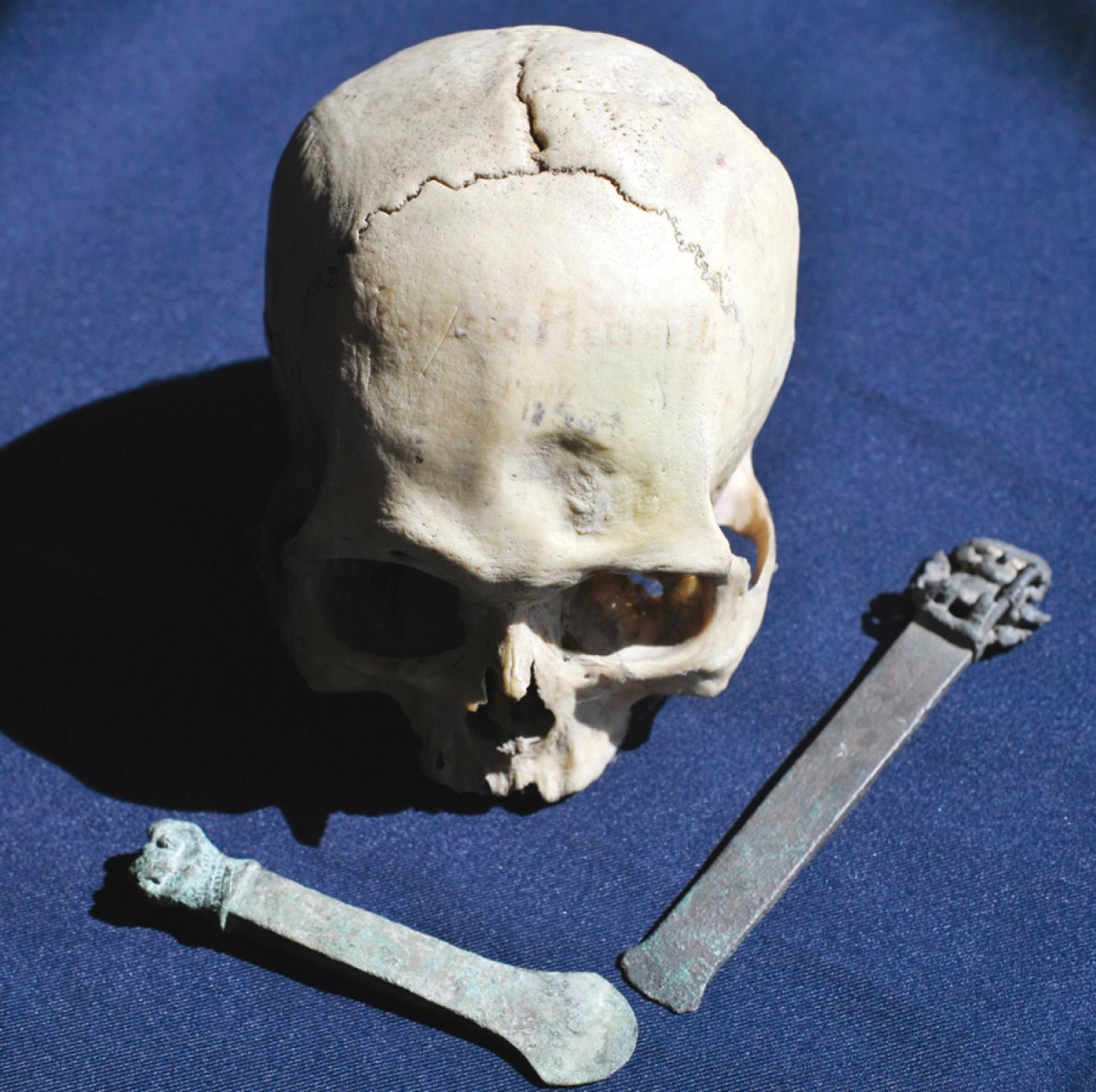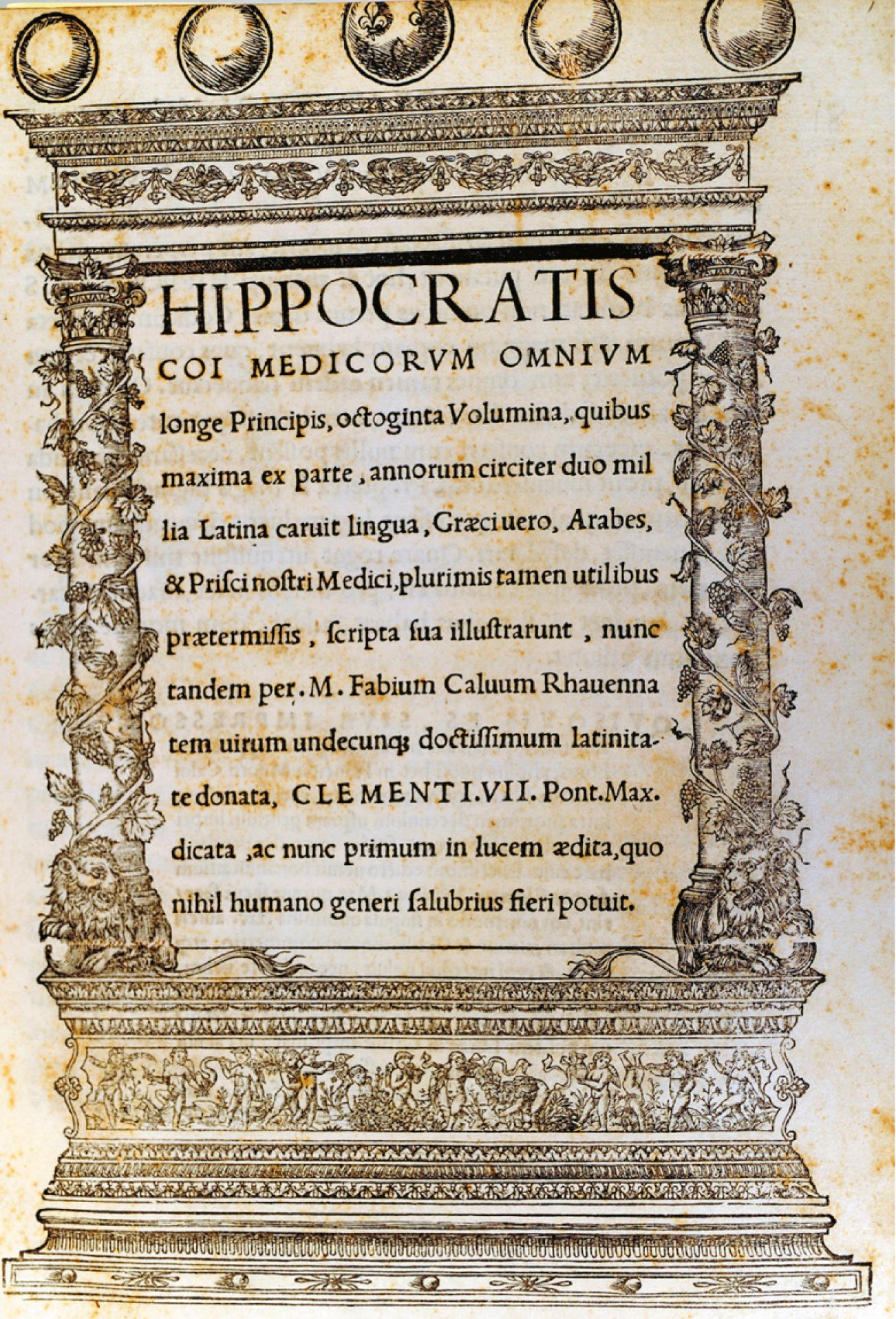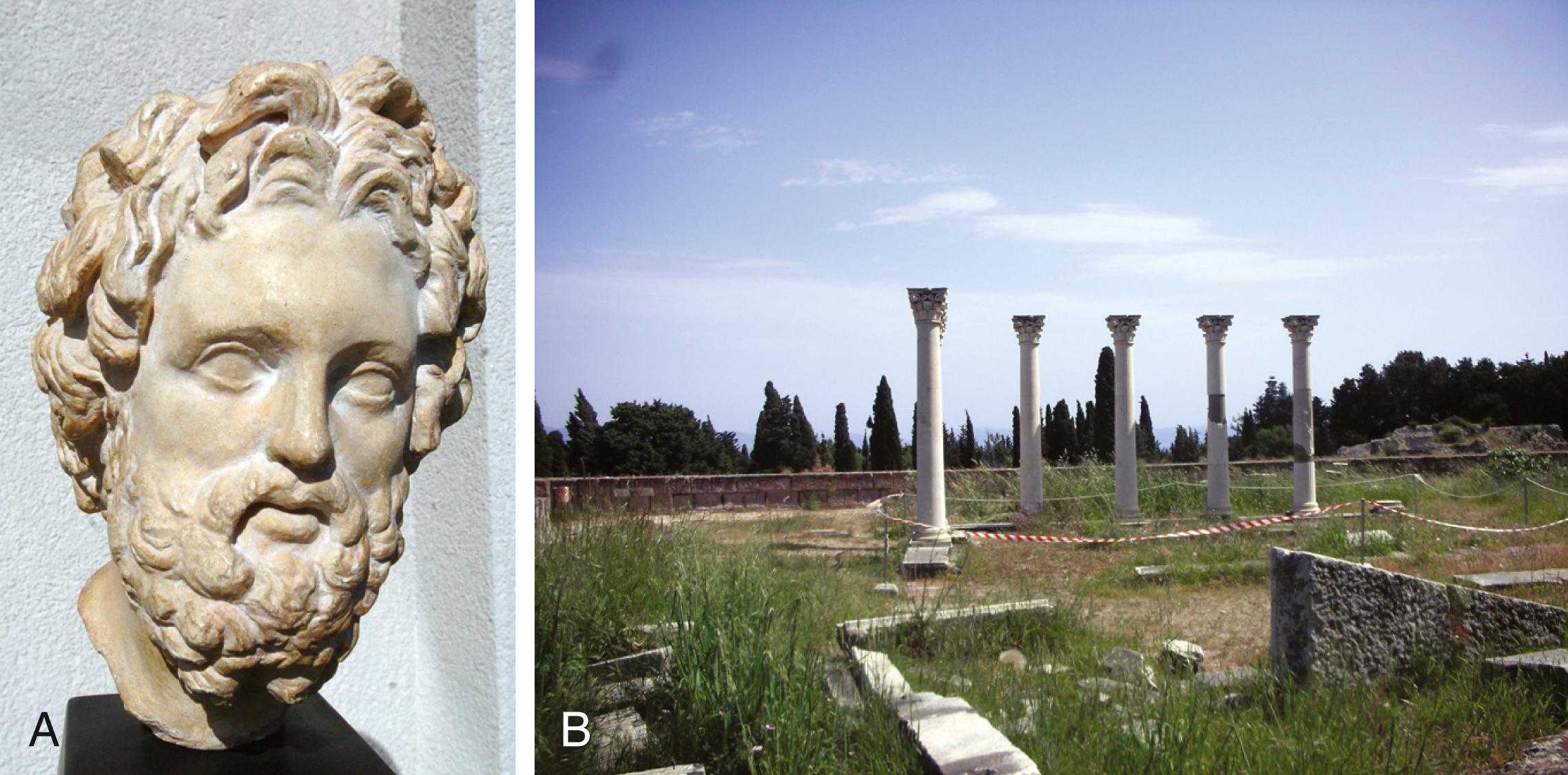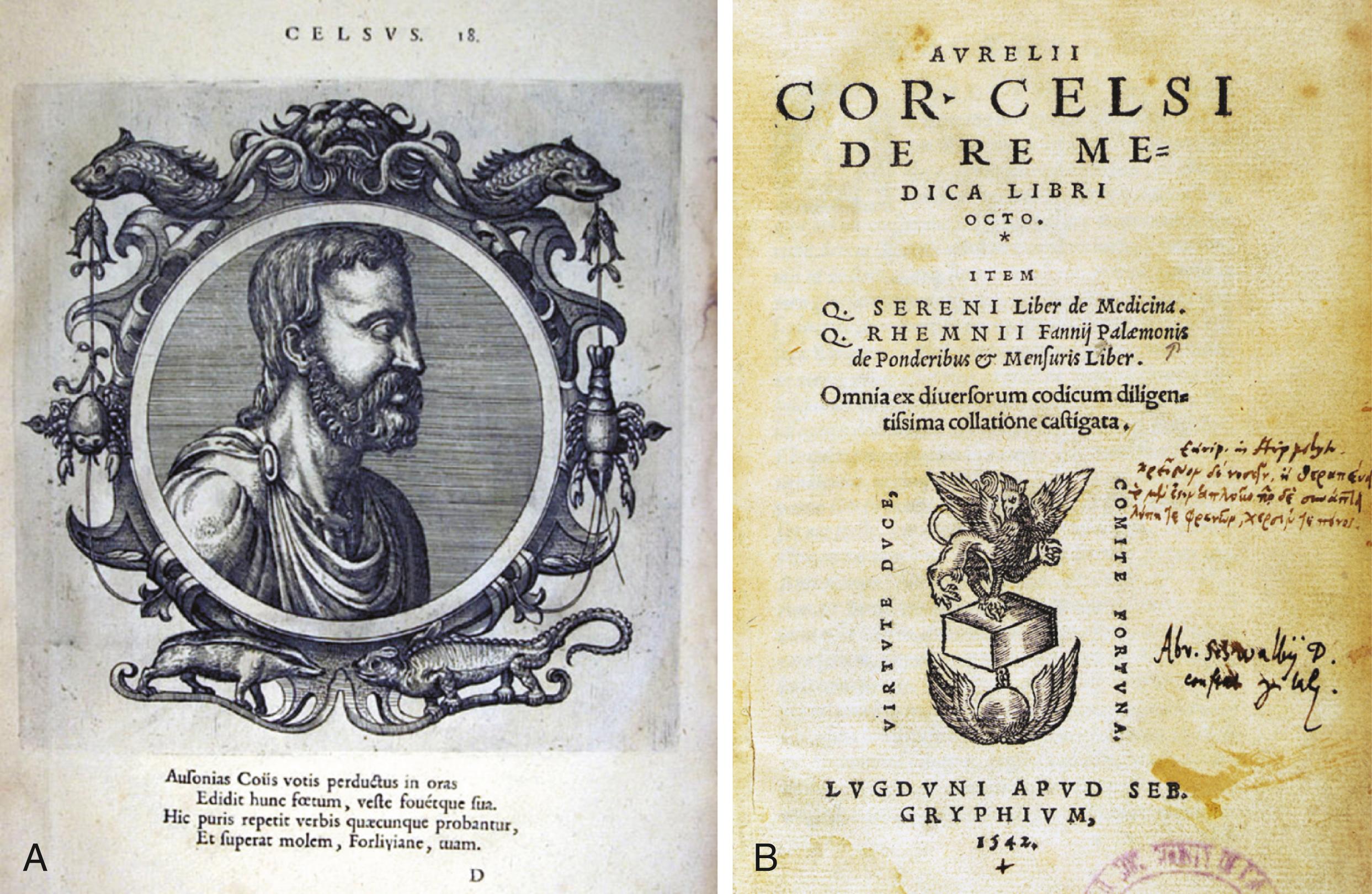Physical Address
304 North Cardinal St.
Dorchester Center, MA 02124
Historical Overview of NeurosurgeryJames Tait Goodrich † and Eugene S. Flamm
This chapter includes an accompanying lecture presentation that has been prepared by the author: ![]()
This chapter includes an accompanying lecture presentation that has been prepared by the author: ![]() .
.
Examples of neurosurgery as a craft that dealt with injuries to the head can be found in the earliest medical writings still extant.
Surgeons without training or knowledge of brain function were called on to treat patients, which they did to the best of their ability.
Although one can find glimmers of neurosurgical treatment in ancient, medieval, and early modern writings, these remain interesting but anecdotal. They are discussed in this chapter as examples of empirical solutions to universal surgical problems.
The confluence in the second half of the 19th century of anesthesia, asepsis, and cerebral localization created the permissive environment for neurosurgical progress.
In the past 50 years neurosurgery has grown in sophistication and effectiveness as a result of learning to use advances in divergent fields such as engineering, molecular biology, and genetics.
The past has established a pathway for a new chapter in neurosurgery: functional, minimallly invasive, and data driven.
Neurosurgery, as a subspecialty in general surgery, is a very recent development, having occurred only in the latter half of the 19th century. Three critical developments and concepts had to occur for neurosurgery to become a specialized subspecialty: anesthesia, antisepsis, and cerebral localization. All three of these developments occurred over a span of less than 40 years (the 1840s to the 1870s). In this chapter the underlying theme is that neurosurgery advanced as surgeons obtained a better understanding of the anatomy and pathophysiology of the nervous system, a goal that continues to be followed today.
This concept was clearly provided in 1602 by William Clowes, a leading surgeon of the Elizabethan age. Clowes invoked a challenge that neurosurgeons must still overcome, even in the age of computerized imaging, microsurgery, and functional neurosurgery:
Those which are Masters and Professors chosen to performe the like operation, ought indeede to have a Lyons heart, a Ladies hand, and a Haukes eye, for that it is a worke of no small importance.
Hippocrates, the father of medicine, had even further detailed this concept when he stated, “Nullum capitis vulnus contemnendum est”: no head injury should be considered trivial.
Neurosurgery is in many ways one of the most ancient of professions. Early humans clearly recognized that to bring down an enemy, a blow to the head was the quickest means. To accomplish this goal, a number of weapons and, in particular, clubs were fashioned to inflict these injuries. Numerous anthropologic collections around the world include examples of skulls with head injuries; more remarkable are a number of skulls with successful trephinations—that is, the patient clearly survived the surgical opening of the skull. From some cultures, such as early Peruvian communities, there exist many skulls that show evidence of trephinations, in most cases for reasons that remain unknown. Paul Broca (1824–1880) in the mid-19th century was one of the first to speculate that this procedure was performed for religious or medical reasons, but there is no documentation for why these procedures were done. It has become apparent that the surgical skill for performing a trephination was worldwide; there are examples from virtually every major civilization, some dating back approximately 12,000 years. There are three common methods for performing a trephination: (1) scraping away the bone, (2) drilling a series of small holes and connecting them, and (3) making cross-hatch cuts in the bone and connecting them to remove a rectangular piece of bone. A trephine skull on which the scraping technique was used, from the early Chimu culture in Peru, and two examples of the typical tool used to perform the scraping (called a tumi ) are illustrated in Fig. 1.1 .

The earliest known written documents that relate to early neurosurgery date from the ancient Egyptian period. During this period, which covered approximately 30 successive dynasties, the earliest known practicing physician and Egyptian polymath lived: Imhotep, or Ii-em-Hotep (c. 2650–2600 bce ). So powerful was Imhotep’s influence that he was given divine status after his death. This period of history has provided the earliest known existing medical and surgical writings. Three Egyptian papyri that have relevance to medicine still exist: the Ebers, Hearst, and Edwin Smith papyri.
According to these Egyptian papyri, the practice of medicine was based largely on magic and superstition. Medical and surgical treatment relied on simple principles, whereby nature provided restoration of health with little intervention and mostly observation with simple mendicants. Of interest to modern neurosurgeons is the concept that the Egyptians realized that immobilization in a neck or back injury was important in reducing further injury. These early physicians commonly prescribed and applied splints for treatments.
The oldest medical text dates from this early civilization and was written in the 16th century bce , approximately 300 years after Hammurabi. This text, now called the Ebers papyrus, includes more than 100 pages of hieratic writing and is of interest for its extensive discussions of contemporary surgical practice. Included are discussions of the removal of tumors, along with recommendations for the surgical drainage of abscesses.
The oldest work that deals extensively with medical and surgical techniques to deal with traumatic injuries is the Edwin Smith papyrus. Edwin Smith was from New York but had moved to Luxor, Egypt, to become an antiquities dealer; he acquired this papyrus in 1862. Smith spent considerable time translating the document into English. This didactic work appears to have been intended to be a surgical textbook. It was originally written during the time of the New Kingdom. This papyrus scroll is 15 feet in length and 1 foot in width and is written in a cursive hieratic script. The surviving text consists solely of a list of 48 cases, including 22 cases of injuries to the spine and cranium. There is even a case of a cranioplasty (Case 9), discussed along with what might be the earliest reported case of neurofibromatosis (Case 45). Each case is discussed with a diagnosis, followed by a formulated prognosis. As a result of scholarly research by Professor James Henry Breasted, this papyrus was translated again in 1930 from the original hieratic script. More recently (2012), a neurosurgeon (Gonzalo M. Sanchez) and a hieratic script expert (Edmund S. Meltzer) collaborated on reinterpreting the document and provided a more detailed medical/surgical explanation of the various cases. The papyrus is now in possession of the New York Academy of Medicine. The following two cases show the insight and some of the techniques illustrated in this early historical papyrus :
Title: Instructions concerning a gaping wound in his head, penetrating to the bone.
Examination: If thou examinest a man having a gaping wound in his head, penetrating to the bone, thou shouldst lay thy hand upon it and thou shouldst palpate his wound. If thou findest his skull uninjured, not having a perforation in it….
Diagnosis: Thou shouldst say regarding him: “One having a gaping wound in his head. An ailment which I will treat.”
Treatment: Thou shouldst bind fresh meat upon it the first day; thou shouldst apply for him two strips of linen, and treat afterward with grease, honey, and lint every day until he recovers.
Gloss: As for: “Two strips of linen,” it means two bands of linen which one applies upon the two lips of the gaping wound in order to cause that one join to the other.
Title: Instructions concerning a gaping wound in his head, smashing his skull.
Examination: If thou examinest a man having a gaping wound in his head, penetrating to the bone, and smashing his skull; thou shouldst palpate his wound. Shouldst thou find that smash which is in his skull deep and sunken under thy fingers, while the swelling which is over it protrudes, he discharges blood from both his nostrils and both his ears, and he suffers with stiffness in his neck, so that he is unable to look at his two shoulders and his breast….
Diagnosis: Thou shouldst say regarding him: “One having a gaping wound in his head, penetrating to the bone, and smashing his skull, while he suffers with stiffness in his neck. An ailment not to be treated.”
Treatment: Thou shalt not bind him but moor him at his mooring stakes, until the period of his injury passes by….
Other than the isolated cases, these remaining papyri provide little information about the actual practice of neurosurgery. , It is evident from these writings that Egyptian physicians recognized head injury and would elevate a skull fracture if necessary. At the same time, if the injury appeared to be too severe, then no treatment was advocated. Both the management and the codification of head injury were not formalized until the development of the Greek schools of medicine (c. 460 bce ), by individuals such as Hippocrates.
The intellectual evolution of neurological surgery originated in the golden age of Greece with the founding of the Alexandrian School in 300 bce . For the first time, open anatomic dissection was incorporated into formal lectures. The concept of a surgeon performing surgery on the head and spine also became formalized for the first time. Because of sporting injuries, particularly gladiator injuries, and wars, head injuries were clearly plentiful and provided ample opportunities to develop the early skills of neurosurgery.
The earliest medical writings from this period are those of Hippocrates (c. 460–370 bce ), the most celebrated of the Asclepiadae. Classical philologists consider that many of the writings attributed to Hippocrates were in reality composed by members of the Hippocratic School. The Hippocratic collection includes clinical cases based mainly on observation, and in most cases, only the simplest of theories are offered. The many neurological cases within the Hippocratic corpus reveal that the understanding of head injury was rather sophisticated. Hippocrates was the first to describe a number of neurological injuries, most resulting from battlefield injuries. The vulnerability of the brain to injury was categorized by location in the brain, from lesser to greater, with injury to the bregma being represented as a higher risk than one to the temporal region, which, in turn, was more dangerous than an injury to the occipital region. Hippocrates devoted a full chapter to injuries of the head, De capitis vulneribus, which deals with the diagnosis and management of head injuries and is the first systematic work devoted to head injuries. He divided head injuries into five categories that were based on the details of the skull fracture. Five types of fractures are described: linear fracture, contusion, depressed fracture, hedra (or dent) occurring with and without fracture, and contrecoup fracture. The neurological condition of the patient was not thought to have any bearing on the surgical indications. Surgery was advised according to the type of fracture. The greater the injury to the skull, the less was the need for trephination. The technical aspects of the process of trephination are presented in a curious mixture of sound advice and incomprehensible admonitions ( Fig. 1.2 ).

The Hippocratic writings contain numerous anatomic descriptions, even though human dissection appears not to have been routinely practiced. The Greeks also were without an anatomic vocabulary, not to be introduced until Galen standardized the use of the Latin language in medicine. These deficiencies combined to limit any standardized anatomic procedures or the practice of surgery. Despite these drawbacks, the Hippocratic writings contain a number of interesting neurological case studies that reflect a view of the early practice of neurosurgery ( Fig. 1.3 ).

One of the earliest descriptions of subarachnoid hemorrhage appears in the Aphorisms , :
When persons in good health are suddenly seized with pains in the head, and straightway are laid down speechless, and breathe with stertor, they die in seven days, unless fever comes on.
Hippocrates and his followers also warned against incising the brain, as convulsions can occur on the opposite side and render the prognosis especially serious. Hippocrates advised against making an incision over the temporal artery, because this could also lead to contralateral convulsions. The writings of Hippocratic schools demonstrate the simple concepts of cerebral localization. Also well understood was the concept of a potential critical prognosis in head injury and that sometimes it was best not to operate. In this early era of medicine, the risk of infection, lack of antiseptic technique, and minimal anesthesia all precluded any serious or aggressive surgical intervention in head injury.
From the region of the Bosporus, among the crowded schools of Alexandria, came Herophilus (Herophilos) (335–280 bce ), a student of Praxagoras and Chrysippus and a member of the educated dynasty of Ptolemies. According to his writing, Herophilus performed dissection on humans and not on animals as was the common practice then. The work of Herophilus, along with that of Galen later, was key in the task of developing an anatomic nomenclature and in forming a much-needed language of anatomy. In examinations of the nervous system, Herophilus’s neurological contributions included following the origin of nerves to the spinal cord anatomically. He was the first to recognize the difference in the motor and sensory tracts. Furthermore, he differentiated between nerves and tendons, thereby correcting a common earlier error. Herophilus was first to detail the anatomy of the brain ventricles and venous sinuses. The description of the “confluence of the sinuses,” or torcular Herophili (Λανοζ = “wine press”), comes from his early investigations. Herophilus provided the first description and naming of the choroid plexus (plexus choroides), so named because of its resemblance to the vascular membrane (chorion) of the fetus. Herophilus also provided the first detailed account of the fourth ventricle and that peculiar arrangement at its base that he called the calamus scriptorius (Αναγλυφη τχ χαλαμχ), which he described as “resembles a pen in writing.” Among his many other contributions was his recognition of the brain as the central organ of the nervous system and the seat of intelligence.
Herophilus’s writings were not free of errors. An anatomic error that remained in vogue for nearly 1800 years was his introduction into the anatomic literature of the rete mirabile, a structure present in ungulates but notably lacking in higher primates. In ungulates this structure acts as an anastomotic network at the base of the brain, a structure that the Greeks incorporated into the early physiologic theories of brain function. In the 2nd century ad , the rete mirabile was later further detailed and elaborated on by Galen of Pergamon. The concept of this structure became entrenched in the anatomic literature, having been codified by the Byzantine Islamic and later European medieval writers, until the 16th century, when it was finally challenged in the anatomic accounts of Andreas Vesalius (1514–1564) and Jacopo Berengario da Carpi (1460–1530). Both of these anatomists, who performed their own human dissections, clearly recognized that the rete mirabile did not exist in humans. It is possible that the human cavernous sinus confused the early writers and they in turn thought that this represented the rete mirable.
Celsus (25 bce to ce 50) was neither a physician nor a surgeon, nor was he a bedside practitioner; rather, he was an intellectual patrician and a medical encyclopedist who attempted to compile all of the important writings of his time. His writings had an important early influence on medicine and surgery. His medical writings were mostly a compilation of the writings from the schools of Hippocrates and the Asclepiadae and from the Alexandrian schools. Celsus lived during the height of the Roman Empire. As counselor to the emperors Tiberius Caesar and Caligula, Celsus was held in great esteem. His book on medicine, titled De Re Medicina, , is now considered one of the most important early medical documents after the Hippocratic writings. Because this work was originally lost, Celsus was one of the few major authors whose works were not transcribed by the Islamic/Arabic writers. In 1443 an early Celsus manuscript was uncovered by Thomas of Sarzanne (later Pope Nicolas V) and reintroduced to the medical community. With the introduction of printing and moveable type, Celsus’s manuscript became the first medical writing to be printed (1478), before even the writings of Hippocrates and Galen. In the De Re Medicina, Book IV, Chapter 10 , his classic description of inflammation appears: “Notae vero inflammationes sunt quattuor, rubor, et tumor, cum calore et dolore [There are four signs of an inflammation: redness, swelling, heat, and pain].”
Celsus made a number of interesting early observations in the field of neurosurgery. Celsus believed that all surgeons should be ambidextrous. Book VIII, Chapter 4 , contains one of the earliest descriptions of an epidural hematoma resulting from a ruptured middle meningeal artery. For head-injured patients, Celsus recommended that the surgeon always operate on the side of greater pain. Celsus was a strong advocate for use of the trephine in head injuries. He noted that the trephine should always be placed at the point where the pain is best localized. Celsus described a technique for a craniectomy that involved drilling a number of holes and then connecting them with a hammer and chisel. The chisel had a protective blade, which separated the dura from the bone and prevented injury to it during the surgical dissection. However, he regarded the operation of trephination as the ultimum refugium, to be used only when all conservative measures had been exhausted ( Fig. 1.4 ).

Several interesting neurological conditions are described in the De Re Medicina, including accurate descriptions of hydrocephalus and facial neuralgia. In accordance with earlier writings, Celsus clearly recognized that a high cervical spine fracture could lead to vomiting and difficulty in breathing. Injury to the lower lumbar spine could cause weakness or paralysis of the legs, as well as urinary retention or incontinence.
Become a Clinical Tree membership for Full access and enjoy Unlimited articles
If you are a member. Log in here